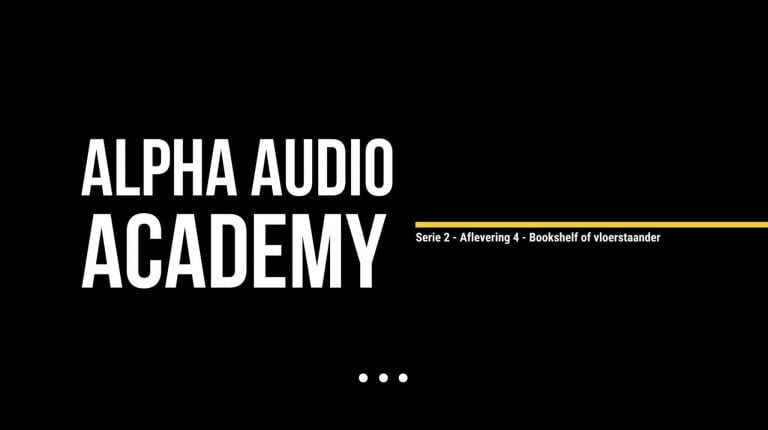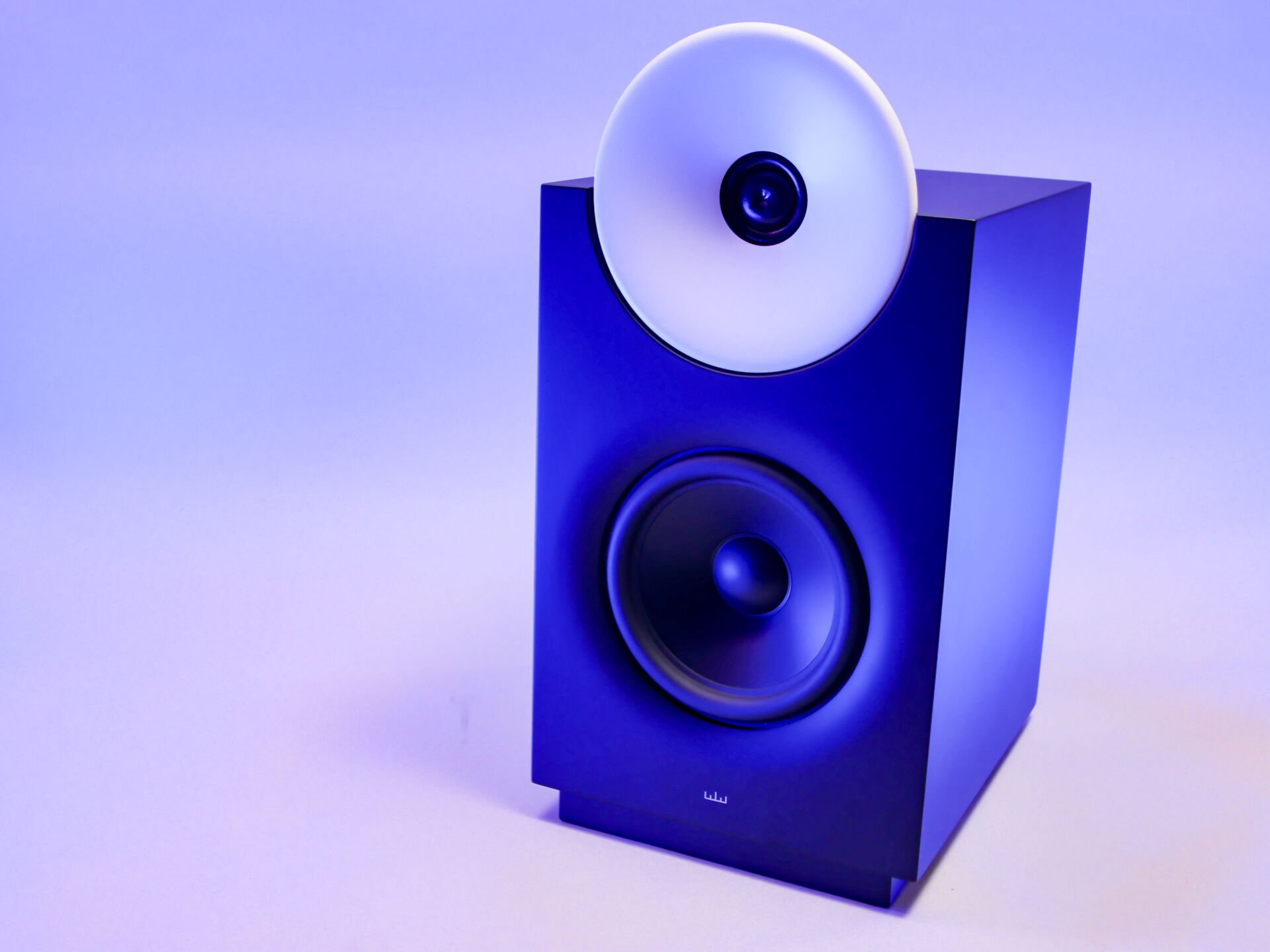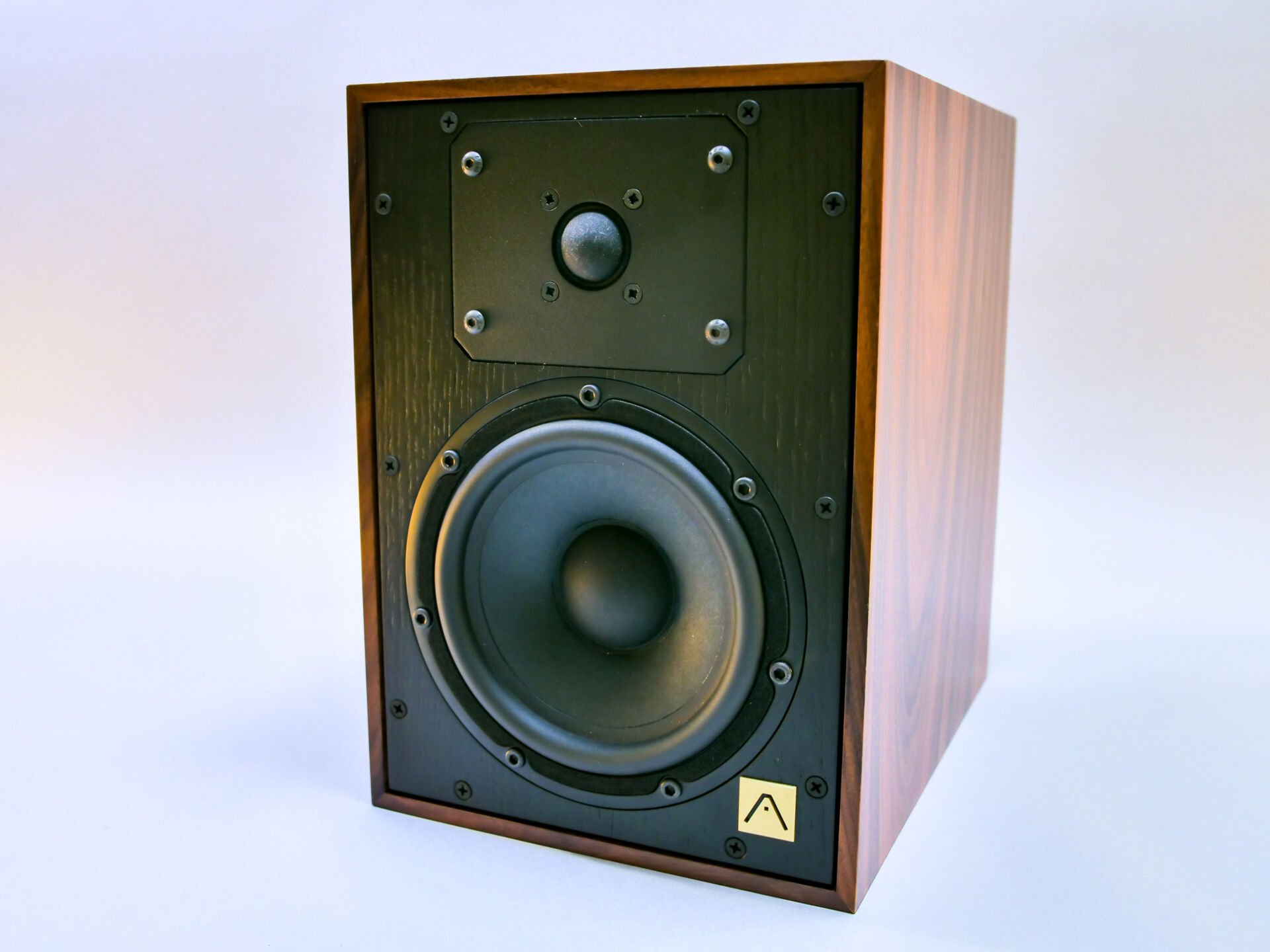

Speakers is a much discussed component on Alpha Audio. The questions regarding this component vary enormously. From: which amplifier do we need, to what is better: a bookshelf or a floorstander. We have already answered a few questions in other episodes. Now we look at the main differences between floorstanders and monitor speakers (or bookshelfs).
Many enthusiasts have to deal with limited space, roommates, budget and of course acoustic challenges. For this reason, compromises often have to be made. The question then becomes: how can you still achieve a good result with relatively limited resources?
Fortunately, manufacturers have taken this into account as well. In almost every line-up you can find various models. From bookshelfs / monitors to large floorstanders. In most cases it is a 2-way bookshelf and a 3-way floorstander. With the larger brands, both flavors come in various sizes: from smaller to substantial.
The rule of thumb is that a larger speaker mainly offers extra bass and foundation. A compact monitor speaker simply cannot go very deep, unless the manufacturer has pulled off all kinds of spectacular tricks. There are examples to be mentioned, but we will go into that in another episode (with the active speakers).
Assume, however, that with a bookshelf it really ends around 40 to 45 Hz. Are you looking for more depth in your music (pun intended), then there are two options: an additional subwoofer or a floorstander.
Watch and listen to this episode (Dutch)
Benefits bookshelf
Of course, if we are going to look purely technically, a three-way floorstander has enormous advantages for those looking for a fullrange system. A more compact two-way bookshelf cannot actually reach 20 Hz and will have more difficulty delivering pressure in the low range due to its compact size.
But… the world is not really black/white… so let’s apply some nuance.
One of the most important parts of a speaker is the cabinet. There is a reason why high-end producers put a lot of time and energy into treating the cabinets. Resonances from the cabinet actually add coloration. And sometimes that is the intention, but if the resonances take serious and unwanted forms, it is very audible. The smaller the enclosure, the easier it is to get it ‘resonance-free’.
Our philosophy is – partly because of this fact – that in the ‘cheaper’ class it is wiser to buy a two-way monitor than an equally priced floorstander. The monitor speaker will really sound cleaner and better than the floorstander… if neutrality is what you are looking for.
What is also striking is that the imaging and looseness of a two-way monitor is almost unmatchable. Partly because of the simpler design of the filter, often just a little less goes wrong than with a more complex three-way system. To achieve the same quality in a larger three-way system, you will have to invest more. As a bonus, you will probably get a slightly deeper bass with more impact.
To get more energy at lower frequencies in a bookshelf setup, it is of course possible to install a subwoofer. We also sometimes get the question, “Which is better: a floorstander or a set of bookshelfs with subwoofer?” This is difficult to answer, because it depends on numerous factors. Think about this: how are you going to filter the set-up? What kind of pre-amp is present? What subwoofer is being combined? Is room correction possible? Etc.
In a favorable case, the subwoofer fits perfectly and the crossover point is not audible. This is certainly possible… however, it is not easy to achieve. Measurement is required and a properly adjustable subwoofer or pre-amp with filters is a must. If you have these adjustment possibilities and the knowledge, then you can realize this. And then it really plays very well. If these settings are not available, the subwoofer will almost always be ‘audible’ in the system. By this we mean that you really hear when the subwoofer complements the bookshelfs: it is not one complete coherent sound image. And that, of course, is not what you’re looking for.
Benefits floorstander
A floorstander has of course also advantages. First of all it is possible to make a fullrange system. After all: the cabinet allows it and there are more speaker units installed, which makes it possible to move more air. Pure physics.
A second advantage is that a designer designs the speaker as a whole, so – if all goes well – the system just plays coherently from bass to treble. This is in contrast to bookshelfs with subwoofers that are not well tuned. In short: floorstanders continue where bookshelfs stop….
But also here it is not so black and white. There are also disadvantages to a floorstander. First of all, it is expensive to produce. We are talking about a larger cabinet, more units and a more complex filter. In short: with an equal budget, a bookshelf can contain better units, filter components and can be finished more nicely. It’s that simple.
Also, with a floorstander you will have to take into account the extra energy that such a speaker radiates into the room. This is not always a problem, but with challenging acoustics a larger floorstander does address the acoustic problems more.
Rounding
At the end of the day there is something to be said for both a bookshelf and a floorstander. A bookshelf can play at a higher level at a similar price. However, limitations in the bass play a role. This can be solved with separate subwoofers, but integrating a subwoofer is not an easy job.
A floorstander can reproduce deeper and more powerful bass, but is more expensive to make. And that can – if budget is a factor – have consequences in terms of transparency and imaging. It’s up to you to decide where to place the balance… quality, budget, both or…. Carte blanche.
In the next episode: active or passive? Do you find these kinds of episodes and series interesting? You can support us on patreon.








Hello guys, you do a fantastic job on comparisons, thanks for your efforts!! I would like to make a suggestion/favor if I may. For the ultimate low level resolution / fine micro detail test track consider using cut 5 (recipe of Love) on the The LA4’s 1977 “Going Home” record. During the intro there is a faint but clear triangle struck 3 separate times. I used to her it clear as a bell on my apogee ribbons but have since not been able to reproduce it any other speakers to any great degree. I can get around 50% of the way there with my custom salks which have a full size (12lb) heil driver on top. At any rate this would be a great way to see how much micro detail and resolution a speaker can produce.
Thanks for the input! Will check!